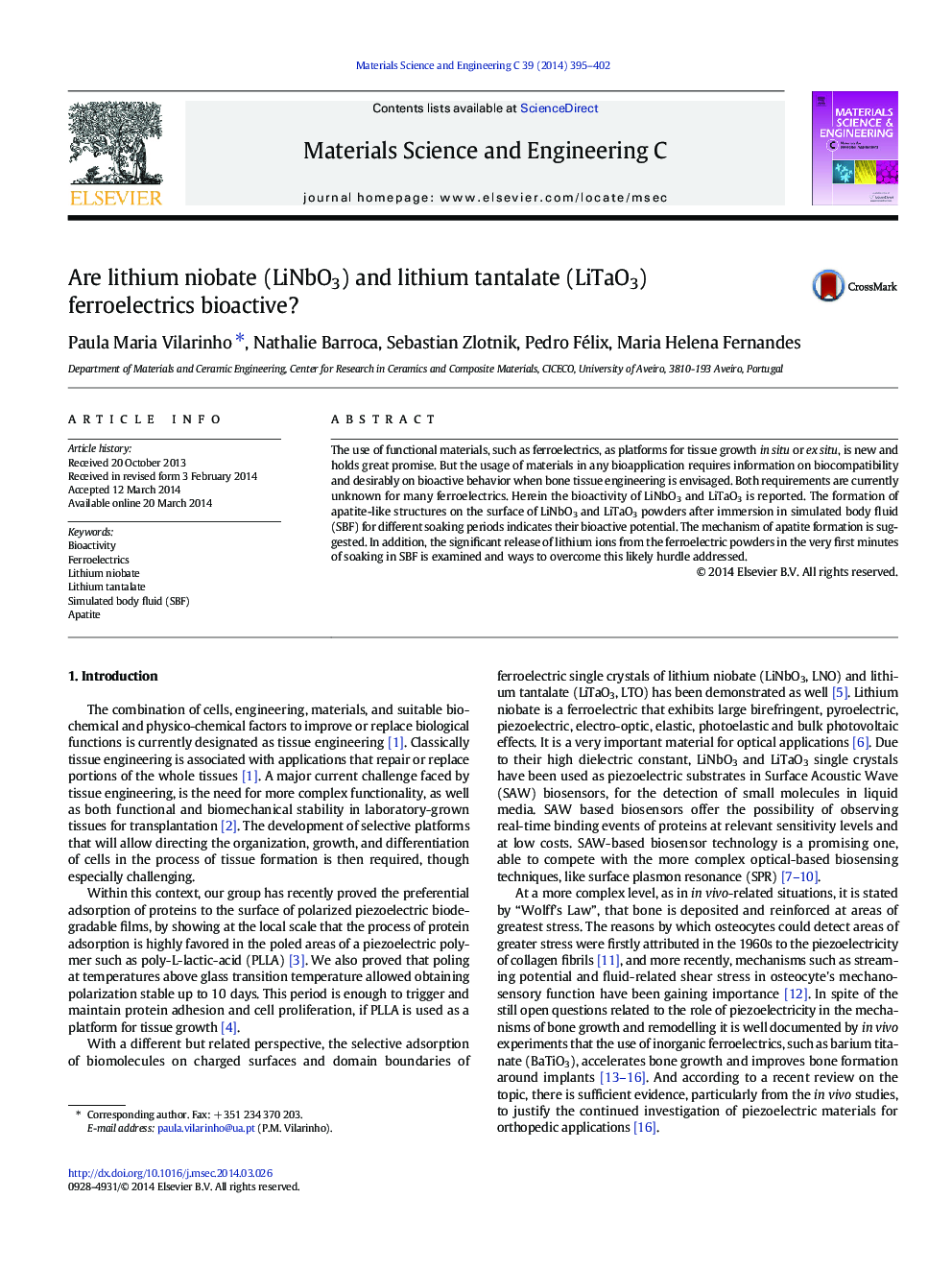| Article ID | Journal | Published Year | Pages | File Type |
|---|---|---|---|---|
| 1428801 | Materials Science and Engineering: C | 2014 | 8 Pages |
•LiNbO3 and LiTaO3 are bioactive ferroelectrics.•Cauliflower apatite type structures indicative of in-vitro bioactivity of LiNbO3 and LiTaO3.•Negative surface charges anchor Ca2 + to which PO43 − attracts forming apatite structure nuclei.•Use of ferroelectrics as platforms for tissue growth in situ or ex situ is new and holds great promise.
The use of functional materials, such as ferroelectrics, as platforms for tissue growth in situ or ex situ, is new and holds great promise. But the usage of materials in any bioapplication requires information on biocompatibility and desirably on bioactive behavior when bone tissue engineering is envisaged. Both requirements are currently unknown for many ferroelectrics. Herein the bioactivity of LiNbO3 and LiTaO3 is reported. The formation of apatite-like structures on the surface of LiNbO3 and LiTaO3 powders after immersion in simulated body fluid (SBF) for different soaking periods indicates their bioactive potential. The mechanism of apatite formation is suggested. In addition, the significant release of lithium ions from the ferroelectric powders in the very first minutes of soaking in SBF is examined and ways to overcome this likely hurdle addressed.
Graphical abstractFigure optionsDownload full-size imageDownload as PowerPoint slide
